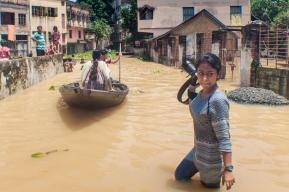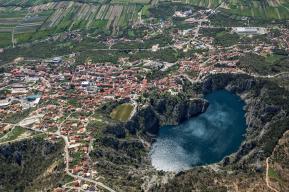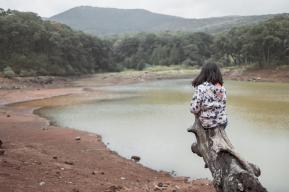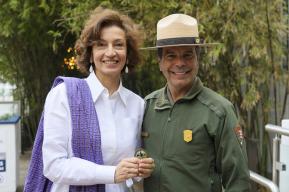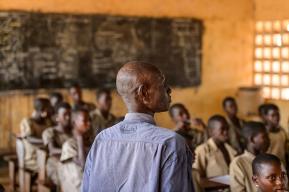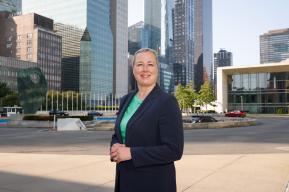Idea
Learning among the trees in Denmark

Mie Olsen
Journalist in Copenhagen, Denmark
At the Danish forest kindergarten Krudthus, about 30 kilometers north of Copenhagen, children spend most of their time in the forest.
Discovering beetles and insects under rocks and fallen branches and naming them. Witnessing the seasonal changing of the leaves. Observing how earthworms decompose dead plants and animals to understand the circle of life. And finally, jumping up to go fishing or cycling between thimbleweed groves.
It is as idyllic as it sounds, and the secret of the pedagogy lies in an open, no-pressure and no-expectations approach. “In nature, there aren’t so many strict guidelines for good behaviour. Children can socialize in new ways and be happy, curious and calm. We encourage them to be adventurous and explore their surroundings in an open way. Or in other words – to be world-facing instead of inward-facing,” explains Hildur Johnson, teacher at Krudthus in the North Zealand region of Denmark.
In nature, there aren’t so many strict guidelines for good behaviour
Outdoor activities also teach children civic responsibility. Even the youngest members of society are engaged in sustainability through small actions such as collecting plastic waste.
An “old” invention
Krudthus is just one among roughly a thousand forest kindergartens in Denmark. The Scandinavian country has been at the global forefront of forest schools. Seeds were already laid in the 1950s, when the Austrian Rudolf Steiner movement, known for its alternative body-and-soul-are-one teaching methods, opened the first private outdoor kindergarten in Stuttgart, Germany.
At the time, moving children from classrooms into “the wild outdoors” may have been controversial. But as more women began working full-time in the 1970s and 1980s, childcare needs increased. Private providers sprung up all over the country, and the fact that these providers had limited indoor areas available turned out to be a blessing in disguise.
In the 1990s, a small group of dedicated teachers transformed the forest kindergarten concept into a new educational approach for primary schools. Maths, language and physics classes were no longer taught only via blackboards and books. Instead, students would now be asked to measure a tree’s height with congruent triangles or examine how seawater conductivity causes ships to rust faster.
Risky play
According to Niels Ejby Ernst, Ph.D. in education and pedagogy and an expert on the history of forest kindergartens, it is no coincidence that the tradition has developed faster in Denmark. “In the Danish school system we give children a lot of innovative learning and playing opportunities. We don't hesitate to take a few liberties and place trust in our children,” he says.
However, this style of teaching calls for a certain level of risk tolerance. A child can fall from a tree or hurt a leg when jumping between rocks. They may get cold or scared. “Children benefit from ‘risky games’,” Ernst argues. “When they feel subjectively on the edge of something dangerous, it strengthens their robustness. It is a well-known fact that children who play in forests and green areas are better off both physically and mentally than peers at the same age without access to such activity.”
Lessons in the forest improve children’s ability to cope with unpredictability in everyday life
During 2013-2017, Copenhagen University conducted an extensive, interdisciplinary TEACHOUT-study on traditional schools versus outdoor schools. It concluded that by developing a more flexible mindset, lessons in the forest improved children’s ability to cope with unpredictability in everyday life. Their learning motivation and reading abilities also improved. Furthermore, children with behavioural challenges benefitted from the natural environment.
Learning through curiosity
“Forest schools apply a bodily, sensory and close-to-life teaching approach rather than an abstract and cognitive approach. It is all about meeting the world and getting to know the people, artefacts and places we want to learn about,” says Karen Seierøe Barfod, a research leader at Copenhagen University and one of the pioneers in the development of didactic teaching outside the classroom.
The location does not necessarily have to be a forest; it can also be a meadow, the seashore, a marsh or agricultural land. Parents need to accept their children getting dirty, catching animals and cutting wood. According to Barfod, it is important to acknowledge that there are many ways to learn about a subject.
She explains how forest schools foster critical thinking, systems thinking and collaboration abilities. It is easier to put these competencies into play if you take children out to “investigate” an actual case in the real world, with all of its complexities and nuances.
Conscious of the benefits of this approach, more and more parents send their children to forest schools today. Traditional institutions, influenced by the positive outcomes, are also increasingly taking activities outdoors. There’s a growing interest in "forest pedagogy" in neighbouring countries such as Norway and Sweden, while education specialists from all over the world are paying visits to learn more about outdoor learning methods.




